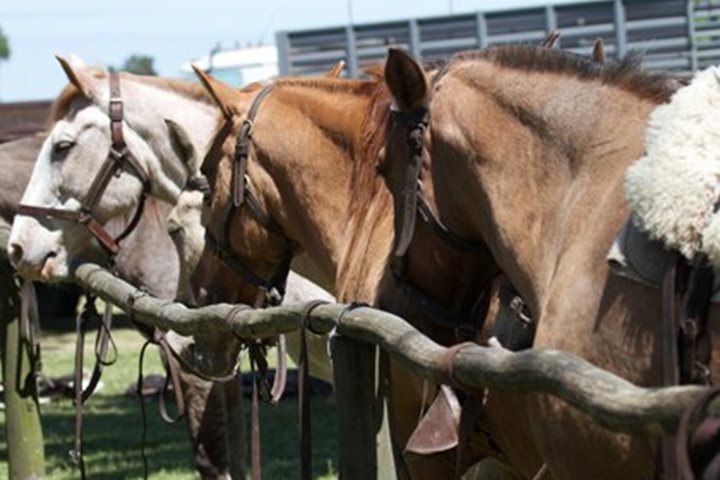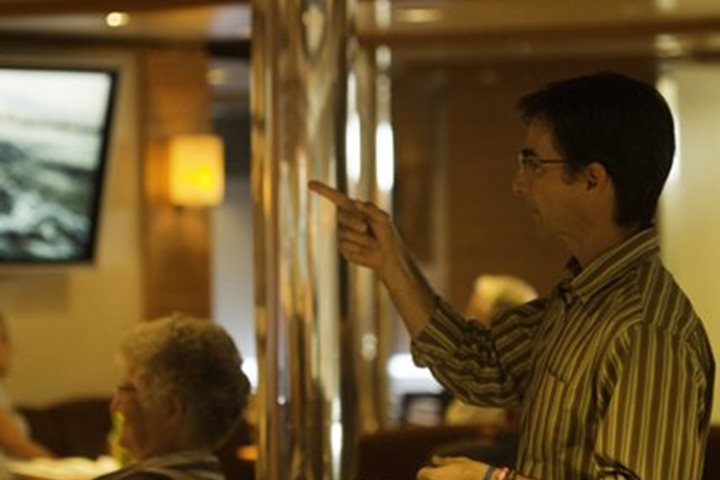After having spent the night sailing upstream in the Amazon Delta, National Geographic Explorer arrived off the mouth of Rio Pucurui just before sunrise. We immediately launched the Zodiacs for an early morning expedition. It was an interesting phenomenon that our ship seemed to be steaming at about four knots while we embarked and disembarked guests with the Zodiacs. Of course, the ship was securely anchored in the strong river current and wasn’t moving at all.
We spent a couple hours cruising with the Zodiacs in the narrow, winding Rio Pucurui, listening to wonderful and exotic sounds of nature, i.e. bird songs and frog callings. The smaller birds were often difficult to view, which is pretty normal for a tropical rain forest environment, but the larger species that typically perch in the open tree tops and/or soar just above the forest were well in evidence. This included various kites, toucans, parrots and macaws, and ultures…particularly the greater yellow-headed vulture (a close relative of the North American turkey vulture).
Everyone was impressed by the multitude of different shades of green seen in the river forest. Although the main blooming season for most tree species is now finished, many of the aquatic plants, as well as the vines covering the forest edge, were still with flowers. One of the highlights of the morning excursion was the sighting of a little silky anteater, or tamandua, climbing around in the branches of a tree growing along the river’s shoreline. Like many mammals in tropical South America, the silky anteater has a prehensile tail, which helps it move about on spindly branches as it searches out ant nests and termite nests in the trees.
We passed by several Caboclo homesteads, and could only imagine what they must have thought of us as we motored past them, waving and taking photographs. Although this may seem a bit like Eden, with a simple lifestyle in a beautiful place, life must still be a struggle for these people. Few of us would be willing to give up our modern conveniences and technology in order to trade places. These are river people, so it was no surprise that we saw lots of river boat traffic, consisting of simple dugout canoes, small wooden and fiberglass motorboats with long-shafted propellers, and large river boats of 35 to perhaps 50 feet (10.6 to 15 meters) in length. Boats provide the only form of transportation here, since there are no roads in this region. We saw cargo boats, trading boats, single family boats, and passenger vessels (including at least one “school bus” boat).
Much of the rest of the day was spent transiting the famous Narrows, an intricate collection of narrow waterways winding among the islands inside the Amazon Delta, and this provided some more very scenic cruising. As we passed by scattered Caboclo river homes, many people (especially kids) quickly launched their boats in order to come out into the wake of our ship. They obviously don’t get much wave action under normal conditions here. It also proved to be great nature watching from the decks, as we were able to view the dense forest quite close from the high vantage of the ship, noting that this is secondary forest. Most of the huge, ancient trees had long ago been harvested, which wasn’t surprising from the number of saw mills we saw along the river banks. In addition, we passed numerous small communities, and even a couple rather large communities…all the while with teenagers, racing around, behind, and alongside our vessel in their noisy little motor boats.
Many more bird species were enjoyed within The Narrows and perhaps the most remarkable one was the amazing swallow-tailed kite. One would probably not easily tire of watching the spectacular aerial displays and flying ability of this large, beautiful bird as it swoops, twists, and turns just above the tree tops searching for lizards, frogs, small birds, etc. Several pink-colored Amazon River dolphins, or botos, were seen surfacing briefly and rolling at the surface.
In the late afternoon, our ship anchored near the mouth of a little tributary that we have named Rio Bud, in honor of our expedition leader. We spent the rest of the day exploring Rio Bud with Zodiacs, cruising slowly through the narrow, winding waterway…enjoying the vegetation, waving at locals living along the banks, and watching various birds and a troop of squirrel monkeys. In the meantime, many locals came out to the ship in their boats and did some trading with the crew. Everyone returned back to the ship just as the sun set, and we began steaming toward the great Amazon city of Belém…tomorrow’s destination.







